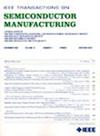Autonomous Robot Orchestration Solution for OHT With Active Q Routing and Digital Twin FA: Factory Automation
IF 2.3
3区 工程技术
Q2 ENGINEERING, ELECTRICAL & ELECTRONIC
引用次数: 0
Abstract
The Autonomous Robot Orchestration Solution (AROS) is transforming the management of robot fleets by identifying the state and environment of each robot and enabling them to collaborate toward common goals. This paper introduces AROS and its application in controlling massive fleets of Overhead Hoist Transport (OHT) vehicles in semiconductor fabrication facilities. AROS leverages key technologies, including reinforcement learning algorithms, discrete event simulation, and real-time data collection through Digital Twin (DT). The DT replicates the real system in a virtual environment with real-time communication to optimize decision-making for OHTs. A key innovation of AROS is the introduction of active Q routing, a dynamic routing method that adapts to changing traffic conditions by predicting and adjusting travel times through discrete event simulation. Active Q routing enhances operational efficiency by mitigating congestion and reducing delays, even in highly dynamic environments. We demonstrate the effectiveness of AROS and active Q routing on OHT system performance, showcasing reductions in average delivery times and increases in delivery capacity. These findings are validated through real-world use cases in a large-scale semiconductor fab.具有主动Q路由和数字孪生FA的OHT自主机器人编排解决方案:工厂自动化
自主机器人编排解决方案(Autonomous Robot Orchestration Solution, AROS)通过识别每个机器人的状态和环境,并使它们能够协作实现共同目标,从而改变了机器人车队的管理方式。本文介绍了AROS系统及其在半导体制造工厂大规模吊装运输(OHT)车队控制中的应用。AROS利用关键技术,包括强化学习算法、离散事件模拟和通过数字孪生(DT)实时数据收集。DT在虚拟环境中复制真实系统,并进行实时通信,以优化oht的决策。AROS的一个关键创新是引入了主动Q路由,这是一种动态路由方法,通过离散事件模拟预测和调整行驶时间来适应不断变化的交通状况。主动Q路由通过减轻拥塞和减少延迟来提高操作效率,即使在高度动态的环境中也是如此。我们展示了AROS和主动Q路由对OHT系统性能的有效性,展示了平均交货时间的减少和交货能力的增加。这些发现通过大规模半导体工厂的实际用例得到了验证。
本文章由计算机程序翻译,如有差异,请以英文原文为准。
求助全文
约1分钟内获得全文
求助全文
来源期刊

IEEE Transactions on Semiconductor Manufacturing
工程技术-工程:电子与电气
CiteScore
5.20
自引率
11.10%
发文量
101
审稿时长
3.3 months
期刊介绍:
The IEEE Transactions on Semiconductor Manufacturing addresses the challenging problems of manufacturing complex microelectronic components, especially very large scale integrated circuits (VLSI). Manufacturing these products requires precision micropatterning, precise control of materials properties, ultraclean work environments, and complex interactions of chemical, physical, electrical and mechanical processes.
 求助内容:
求助内容: 应助结果提醒方式:
应助结果提醒方式:


